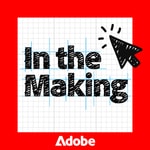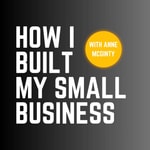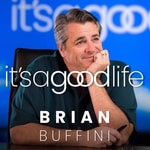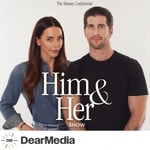Physio Edge podcast with David Pope – Details, episodes & analysis
Podcast details
Technical and general information from the podcast's RSS feed.
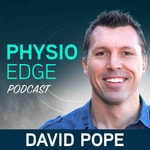
Physio Edge podcast with David Pope
David Pope at Clinical Edge
Frequency: 1 episode/30d. Total Eps: 172

Recent rankings
Latest chart positions across Apple Podcasts and Spotify rankings.
Apple Podcasts
🇬🇧 Great Britain - medicine
02/08/2025#54🇬🇧 Great Britain - medicine
01/08/2025#46🇬🇧 Great Britain - medicine
26/07/2025#65🇬🇧 Great Britain - medicine
25/07/2025#39🇨🇦 Canada - medicine
24/07/2025#76🇬🇧 Great Britain - medicine
24/07/2025#43🇬🇧 Great Britain - medicine
23/07/2025#40🇬🇧 Great Britain - medicine
22/07/2025#45🇨🇦 Canada - medicine
21/07/2025#63🇬🇧 Great Britain - medicine
21/07/2025#60
Spotify
No recent rankings available
Shared links between episodes and podcasts
Links found in episode descriptions and other podcasts that share them.
See all- https://www.headspace.com/
405 shares
- https://submeta.io/
150 shares
- https://www.clinicaledge.co/sign-up
108 shares
- https://twitter.com/davidkpope
146 shares
- https://twitter.com/tomgoom
55 shares
- https://twitter.com/ShoulderGeek1
46 shares
RSS feed quality and score
Technical evaluation of the podcast's RSS feed quality and structure.
See allScore global : 52%
Publication history
Monthly episode publishing history over the past years.
164. Case study: Rotator cuff tear + arm symptoms. Physio Edge Shoulder Success podcast with Jo Gibson
Episode 164
jeudi 18 juillet 2024 • Duration 14:51
Upper Limb Rehabilitation Specialist Jo Gibson explores an intriguing case of an 84-year-old man with a massive rotator cuff tear of the supraspinatus and partial subscapularis tear. Despite his long history of shoulder issues, he’s improving, but constant pain and intermittent numbness in his posterior arm and into his hand complicate the situation.
In this podcast, you’ll explore:
- What a massive rotator cuff tear (MRCT) is
- Common pain patterns with rotator cuff tears
- Why the Suprascapular nerve can be affected in MRCT’s
- How to set realistic expectations with patients about their recovery
- Common causes of pain into the posterior arm, wrist and hand
- How to differentially diagnose shoulder, arm and hand pain
- Assessment tests to identify and exclude cervical involvement
- When nerve conduction tests or EMG should be performed
- Rehabilitation ideas for this patient
Listen to this podcast now to improve your rehabilitation of shoulder & arm pain and rotator cuff tears.
Free shoulder assessment infographic seriesThe handout for this podcast consists of a transcript and research articles referenced in this podcast.
Click here for the free webinar with Jo Gibson “Rotator cuff revealed! Rehab & reasoning”.
Free video series “Frozen shoulder assessment & treatment” with Jo GibsonImprove your frozen shoulder assessment and treatment now with Jo Gibson’s free video series at clinicaledge.co/shoulder
Shoulder: Steps to Success online course with Jo GibsonImprove your assessment and treatment of shoulder pain with the Shoulder: Steps to Success online course with Jo Gibson, now available for enrolment at clinicaledge.co/shouldersuccess
Free trial Clinical Edge membershipUse a fresh approach to your musculoskeletal and sports injury treatment with a free trial Clinical Edge membership at clinicaledge.co/freetrial
Links associated with this episode:- Free shoulder assessment infographic series with Jo Gibson
- Free webinar - Rotator cuff revealed: Rehab & reasoning with Jo Gibson
- Get your access to the free video series “Frozen shoulder assessment & treatment” with Jo Gibson
- Improve your shoulder assessment & treatment with the Shoulder: Steps to Success online course with Jo Gibson
- Improve your confidence and clinical reasoning with a free trial Clinical Edge membership
- Join Jo Gibson live on Facebook & ask your shoulder related questions every Monday
- Download and subscribe to the podcast on iTunes
- Download the podcast now using the best podcast app currently in existence - Overcast
- Listen to the podcast on Spotify
- Jo Gibson on Twitter
- Let David know what you liked about this podcast on Twitter
- Review the podcast on iTunes
- Infographics by Clinical Edge
163. ACL treatment options and cross-bracing with Clare Walsh
Episode 163
mercredi 17 avril 2024 • Duration 01:07:42
ACL injuries result in significant time away from sport and distress for patients. The variety of management options, from surgical intervention to non-surgical management and rehabilitation protocols, often makes us uncertain when educating and helping patients choose the most appropriate care for their needs and goals.
Recently, a new non-operative ACL injury management pathway called the “Cross bracing protocol” has been pioneered and developed by Dr Tom Cross and Tom’s father (the late Orthopaedic surgeon) Dr Merv Cross. This protocol offers a promising alternative for patients with ACL injuries who are suitable for non-surgical intervention, where the ACL injury may heal or repair itself.
Not all patients with an ACL injury are suitable for the Cross bracing protocol or non-surgical management, so how can you identify whether your patient is suitable, and which treatment options are best for each patient?
In this insightful podcast episode, we discuss the complex challenge of ACL injury management and Cross bracing with Clare Walsh (Specialist Sports & Exercise Physiotherapist, FACP).
Clare treats a lot of patients with ACL injuries with prehabilitation, post-op rehabilitation, or non-surgical management including Cross bracing. Clare works alongside Dr Tom Cross and other Sports Medicine Doctors, Orthopaedic surgeons (including the late Dr Merv Cross) and leading Sports Physiotherapists at Stadium Sports Physiotherapy and The Stadium Clinic.
Clare teaches on the Cross bracing course conducted in Australia for Physiotherapists and health professionals, and is a Senior Educator & Presenter here at Clinical Edge.
In this podcast we explore:
- Cross bracing
- What it is and how it developed.
- What research has been performed to date, and what it shows about the chances of ACL healing with the Cross bracing protocol.
- Assessment tests & specific imaging that are used to assess patient suitability.
- Why patients might opt for Cross bracing rather than surgery.
- Who isn’t suitable for Cross bracing.
- Potential negative outcomes of Cross bracing.
- Which patients are more likely to be suitable and successful with Cross bracing - eg. injury type, age, level of sport, goals, psychosocial factors.
- Medical factors that impact suitability.
- Psychosocial factors that impact whether a patient can undergo the protocol.
- Which leg (right or left) is better suited to bracing and why.
- Which type of braces are commonly used.
- How soon the protocol needs to commence after injury to be successful.
- Which concomitant injuries can still heal in a brace and which need surgery e.g. meniscus injuries, bucket handle tears of the meniscus, MCL tears.
- How long patients remain in a brace.
- Exercises and activities that can and should be performed throughout Cross bracing.
- How patients can move or walk around throughout the Cross bracing period.
- How Cross bracing has changed and evolved.
- Whether the ACL is at increased risk of re-rupture following the protocol.
- Essential medical management during the protocol.
- Whether therapists can put a patient in a brace, or manage the protocol independently.
- What to you do if you think a patient may be suitable for Cross bracing.
- How to refer patients for Cross bracing
- Followup imaging at the end of the protocol.
- Functional assessment tests used at the end of the protocol.
- Return to training (RTT) and return to play (RTP) following the protocol.
- Which patients require surgery instead of conservative management.
- Early surgery vs delayed surgery.
- Spontaneous ACL healing - what the research says.
- How to use patient-centred decision-making to guide patients into the most suitable recovery pathway - surgery, bracing or non-surgical management.
- Case studies and comparisons of patients that underwent either Cross bracing or ACL reconstruction.
This podcast is packed full of great information on this emerging ACL injury treatment. You’ll finish this podcast with a deeper understanding of ACL injury management and Cross bracing plus practical knowledge, solutions and insights you can apply into your practice.
Links- Improve your musculoskeletal and sports injury assessment & treatment results with a free trial Clinical Edge membership
- Free Achilles tendinopathy video series with Tom Goom
- David Pope at Clinical Edge
- Download and subscribe to the podcast on iTunes
- Download the podcast in Overcast
- Listen to the podcast on Spotify
- Clare Walsh on Twitter
- David Pope on Twitter
- David Pope & why I started Clinical Edge
- Review the podcast on iTunes
- Infographics by Clinical Edge
154. Hip dysplasia key signs and symptoms. Physio Edge Track record: Running repairs podcast with Tom Goom
Episode 154
vendredi 19 mai 2023 • Duration 15:40
Hip dysplasia is a commonly missed cause of hip and groin pain, catching, clicking, locking or popping, resulting from lack of coverage of the femoral head by the acetabulum.
How can you identify hip dysplasia in your hip or groin pain patients, and avoid misdiagnosing it as iliopsoas or adductor related groin pain? What signs and symptoms will your patients reveal in their subjective history that’ll help you identify this condition?
Find out the key signs and symptoms of hip dysplasia in this podcast with Tom Goom (Running Physio).
Improve running injury assessment & treatment now with the Running Repairs Online course with Tom Goom at clinicaledge.co/runningrepairs
Free running injury assessment & treatment video series available now Links associated with this episode:- Improve your confidence and clinical reasoning with a free trial Clinical Edge membership
- Join Tom live on Facebook & ask your shoulder related questions every Friday
- Download and subscribe to the podcast on iTunes
- Download the podcast now using the best podcast app currently in existence - Overcast
- Listen to the podcast on Spotify
- Tom Goom on Twitter
- Tom Goom’s website
- David Pope - Twitter
- David Pope & why I started Clinical Edge
- Review the podcast on iTunes
- Infographics by Clinical Edge
- Download the podcast handout to receive the articles associated with this podcast.
- Jacobsen JS, Søballe K, Thorborg K, Bolvig L, Storgaard Jakobsen S, Hölmich P, Mechlenburg I. Patient-reported outcome and muscle–tendon pain after periacetabular osteotomy are related: 1-year follow-up in 82 patients with hip dysplasia. Acta orthopaedica. 2019 Jan 2;90(1):40-5.
- Nunley RM, Prather H, Hunt D, Schoenecker PL, Clohisy JC. Clinical presentation of symptomatic acetabular dysplasia in skeletally mature patients. JBJS. 2011 May 4;93(Supplement_2):17-21.
- O'Brien MJ, Jacobsen JS, Semciw AI, Mechlenburg I, Tønning LU, Stewart CJ, Heerey J, Kemp JL. Physical impairments in Adults with Developmental Dysplasia of the Hip (DDH) undergoing Periacetabular osteotomy (PAO): A Systematic Review and Meta-Analysis. International Journal of Sports Physical Therapy. 2022 Oct 1;17(6):988-1001.
- Reiman MP, Décary S, Mathew B, Reiman CK. Accuracy of clinical and imaging tests for the diagnosis of hip dysplasia and instability: a systematic review. journal of orthopaedic & sports physical therapy. 2019 Feb;49(2):87-97.
Chapters:
- 03:43 - Who develops hip dysplasia?
- 06:35 - Objective tests
- 09:11 - Hip dysplasia vs gluteal tendinopathy
- 10:45 - Hip dysplasia vs femoral neck stress structure
- 14:13 - Key takeaways
064. What is causing calf pain in runners and how can you assess it with Tom Goom
Episode 64
vendredi 9 juin 2017 • Duration 28:56
One of the most popular blogposts of all time on Tom Goom's website running-physio.com is on how to manage calf tears in runners. Is this because it is a really common problem, or because Tom wrote such a great blogpost? It's a bit hard to tell, and most likely it's a bit of both, but it begs the question "Why is calf pain one of the issues so many runners face? "
In episode 64 of the Physio Edge podcast, David Pope and Tom Goom discuss the latest research around calf pain in runners and what is actually going on. We want to give you all the tools you need to assess runners that present with calf pain, so we have included this in the episode as well.
If you would like to up your game on calf pain, here are some of the highlights from the podcast:
- What is responsible for calf pain in runners?
- What are the common symptoms?
- What will imaging show (or not show)?
- What happened to chronic exertional compartment syndrome (CECS)? Does it still exist?
- What is biomechanical overload syndrome, and how is it different to CECS?
- Who are the most likely culprits to experience calf pain?
- How can you assess runners with calf pain?
- What tests should you perform?
- How can you perform a calf capacity test?
Free running injury assessment & treatment video series available now Links of Interest
- Tom Goom on Twitter
- Let David Pope know what you liked about this podcast on Twitter
- Review the podcast on iTunes
- Like the podcast on Facebook
- Infographics by Clinical Edge
- Get your free trial Clinical Edge membership
- Tom Goom's website & courses
- Tom on Facebook Live
Related posts
- Physio Edge 060 Plantar fasciopathy in runners with Tom Goom
- Infographic - Plantar fasciopathy in runners with Tom Goom
- Infographic - Plantar fasciopathy imaging & education with Tom Goom
- Physio Edge 061 How to assess & diagnose plantar fasciopathy in runners with Tom Goom
- Infographic - How to assess & diagnose plantar fasciopathy in runners with Tom Goom
- Physio Edge 062 How to treat plantar fasciopathy in runners with Tom Goom
- Infographic - How to treat plantar fasciopathy in runners with Tom Goom
Research associated with this episode
063. How to assess and treat posterior hip and gluteal pain with Benoy Mathew
Episode 63
mercredi 31 mai 2017 • Duration 46:28
Posterior hip pain can have a number of causes, with referral from the lumbar spine, SIJ and hip, along with local structures such as the hip joint, gluteals, glute tendons, proximal hamstring tendons. How can you identify the structures involved in your patient's posterior hip pain? What tests can you perform in your objective assessment to assist your treatment? What is the best way to treat the glutes if they are the involved in your patient's pain?
In episode 63 of the Physio Edge podcast, Benoy Mathew and David Pope explore how you can improve your diagnosis and results with posterior hip pain.
You will discover:
- What are some of the common causes of posterior hip pain?
- Gluteal tendinopathy (GT)
- What area of symptoms will patients with GT report?
- What are the pattern of symptoms for GT?
- What tests can we perform to make GT more or less likely
- How can we treat GT?
- Deep gluteal syndrome (DGS)
- What is deep gluteal syndrome?
- What muscles can be involved in DGS?
- How can we differentiate it from Gluteal tendinopathy?
- What tests can you perform to confirm or exclude DGS?
- How does the treatment for DGS differ to GT?
Benoy is presenting a free webinar with Clinical Edge on "How to assess & diagnose posterior hip and gluteal pain", that complements this podcast, and takes you through the common sources of hip pain, how to identify hip and lumbar spine red flags, and demonstrates exactly how you can perform an assessment to test and differentially diagnose the structures involved in your patients pain.
CLICK HERE to enrol on this free webinar with Benoy Mathew
Ben also presented a webinar with Clinical Edge on how to rehabilitate adductor and psoas related groin pain. The webinar helps you discover:
- Rehabilitation of adductor and psoas related groin pain
- Practical tips
- Common presentations
- Osteitis pubis, sports hernia, hip impingement
- Rehabilitation from initial stages to plyometrics
Links of Interest
- Download and subscribe to the podcast on iTunes
- Download your free podcast handout on how to assess and treat posterior hip and gluteal pain
- Physio Edge podcast 053 Hip and groin pain part 1 - diagnosis, pathology and red flags with Benoy Mathew
- Physio Edge 054 Hip and groin part 2 - assessment and treatment with Benoy Mathew
- Download the free podcast handout for Physio Edge 054 Hip & Groin pain Part 2
- Webinar on groin pain rehabilitation with Benoy
- Benoy Mathew on Twitter
- Benoy Mathew's website and courses
- Access to Ben's webinar on rehabilitation of hip and groin pain, along with all of the Clinical Edge webinars and videos with a free trial membership
- David on Twitter
- Review the podcast on iTunes
- Like the podcast on Facebook
Articles related to this episode:
- Franklyn-Miller et al (2009)- The Gluteal Triangle: a clinical patho-anatomical approach to the diagnosis of gluteal pain in athletes , BJSM. Open Access Link
- Grimaldi & Fearon (2015)- Gluteal Tendinopathy: Integrating Pathomechanics and Clinical Features in Management, JOSPT. Open Access Link
- Hernando et al (2016)- Evaluation and management of ischio-femoral impingement: a pathophysiologc, radiolgic and therapeutic approach to a complex diagnosis, Skeletal Radiol
- Martin et al (2016)- Deep Gluteal Syndrome, JHPS, Open Access Link
- Martin et al (2016)- Ishiofemoral Impingement and Hamstrings Syndrome, Distal Causes of Deep Gluteal Syndrome. Where do we go next? Clin Sports Med. Open Access Link
- Michel et al (2013)- Piriformis muscle syndrome: Diagnostic criteria and treatment of a mono centricseries of 250 patients, Annals of Physical and Rehabilitation Medicine
- The Copenhagen Hip and Groin Outcome Score (HAGOS): development and validation according to the COSMIN checklist
- Physical Examination of the Hip by Dr. Hal D. Martin
062. How to treat plantar fasciopathy in runners with Tom Goom
Episode 62
mercredi 24 mai 2017 • Duration 41:29
How can you treat plantar fasciopathy? How can you return your plantar fasciopathy patients to activity and running? When can they run without aggravating their pain?
In episode 62 of the Physio Edge podcast, Tom Goom and David Pope help you discover exactly how you can get great treatment outcomes with plantar fasciopathy.
You will discover:
- How can you treat plantar fasciopathy (PF)?
- How can you help reduce plantar fascia pain during the "pain-dominant" phase?
- How can you improve load capacity during the "load-dominant" phase?
- When do your patients need relative rest?
- What cross training options are suitable for runners with PF?
- When and how can you incorporate strengthening into your treatment?
- What other impairments should you address in your treatment?
- How do you adapt strengthening if your patients pain is irritable vs non-irritable
- Is stretching helpful?
- Should you include other treatment, eg taping, orthotics, gel heel cup
- When can your patients return to running?
- How long is the average recovery from PF?
- A PF case study with exercise progressions and return to running.
This podcast follows on from Physio Edge 060 Plantar fasciopathy in runners with Tom Goom and Physio Edge 061 How to assess & diagnose plantar fasciopathy in runners with Tom Goom
Free running injury assessment & treatment video series available now Links of Interest- Download and subscribe to the podcast on iTunes
- Tom Goom on Twitter
- Connect with David Pope on Twitter
- Review the podcast on iTunes
- Like the podcast on Facebook
- Infographics by Clinical Edge
- Get your free trial Clinical Edge membership
- Tom Goom's website & courses
- Tom on Facebook Live
Related posts
- Infographic - How to treat plantar fasciopathy in runners with Tom Goom
- Physio Edge 060 Plantar fasciopathy in runners with Tom Goom
- Infographic - Plantar fasciopathy in runners with Tom Goom
- Infographic - Plantar fasciopathy imaging & education with Tom Goom
- Physio Edge 061 How to assess & diagnose plantar fasciopathy in runners with Tom Goom
- Infographic - How to assess & diagnose plantar fasciopathy in runners with Tom Goom
Research associated with this episode
061. How to assess & diagnose plantar fasciopathy in runners with Tom Goom
Episode 61
mercredi 17 mai 2017 • Duration 41:12
Assessment and diagnosis is vital in planning your plantar fasciopathy treatment program, and successfully returning your patients to activity and running. Structures in the vicinity of the plantar fascia insertion may contribute to plantar heel pain, but require a very different treatment approach. How can you identify other structures that are involved? What questions do you need to ask in the history? How can you perform an examination, and what tests should you perform on patients with plantar fasciopathy?
In episode 61 of the Physio Edge podcast, Tom Goom and David Pope help you discover exactly how you can assess and differentially diagnose plantar fasciopathy.
You will discover:
- Plantar fasciopathy clinical presentation
- How to identify fat pad irritation
- Patterns of calcaneal and navicular bony stress injuries
- How you can identify nerve entrapment and radiculopathy
- Red flags such as spondyloarthropathy
- Questions to ask in your subjective that will guide your diagnosis and treatment
- How to perform an objective assessment
- Tests you need to perform
- Identifying impairments to address during rehabilitation
- When you should perform a running assessment
This podcast follows on from Physio Edge 060 Plantar fasciopathy in runners with Tom Goom
Free running injury assessment & treatment video series available nowLinks of Interest
- Download and subscribe to the podcast on iTunes
- Tom Goom on Twitter
- Connect with David Pope on Twitter
- Review the podcast on iTunes
- Like the podcast on Facebook
- Infographics by Clinical Edge
- Get your free trial Clinical Edge membership
- Tom Goom's website & courses
- Tom on Facebook Live
Research associated with this episode
060. Plantar fasciopathy in runners with Tom Goom
Episode 60
mardi 9 mai 2017 • Duration 34:59
Plantar fasciopathy is one of the most common causes of foot pain in runners and non-athletes alike. Our understanding of plantar fasciopathy (PF) pathology and treatment has progressed significantly over recent years. In episode 60 of the Physio Edge podcast, Tom Goom and David Pope explore PF, what we know about it, and how you can explain the condition, treatment and recovery process to your patients.
You will discover:
- What we know about plantar fasciopathy
- What pathology is present
- When is imaging indicated, and what information does it provide
- Which forms of imaging are the most useful
- What are the risk factors for developing PF
- Which aspects of running may be related or contribute to developing PF?
- How can you explain PF the condition, treatment and recovery process to your patients
Free running injury assessment & treatment video series available now
Links of Interest
- Download and subscribe to the podcast on iTunes
- Tom Goom on Twitter
- Connect with David Pope on Twitter
- Review the podcast on iTunes
- Like the podcast on Facebook
- Get your free trial Clinical Edge membership
- Tom Goom's website & courses
- Tom on Facebook Live
Research associated with this episode
059. Running Injuries - What are the most important factors? A group discussion with Tom Goom, Greg Lehman & Dr Christian Barton
Episode 59
samedi 6 mai 2017 • Duration 01:41:42
How can you identify the most important factors involved in your patients running injuries? During your rehabilitation of runners, which is most important to address - load, gait pattern, strength, foot strike, pelvic position, footwear, range of movement or other factors?
I wanted to discuss and debate these issues with a number of Physiotherapists that treat and research running injuries, so I have a very different format for you on this episode of the Physio Edge podcast - a group podcast.
On this podcast, we have Tom Goom, Greg Lehman and Dr Christian Barton all in one virtual room discussing and debating the merits of the various approaches to running injuries.
In this episode of the Physio Edge podcast David Pope and the group discuss:
- When is it ok for your runners to continue running, and when do they need to stop
- Common myths around running retraining
- When is it important to change your patients foot strike?
- Which patient presentations and pathologies will be assisted with running retraining?
- How can you identify a suitable running load during rehab
- How can you incorporate running retraining into your rehab
- Which areas are important to running assessment
- How can you manage training load strength and conditioning
- When are plyometrics appropriate during rehabilitation
- Other factors that impact injury prognosis and duration
- What advice can you give new runners
- Which footwear should runners wear?
Links of Interest
- Download and subscribe to the podcast on iTunes
- Connect with David Pope on Twitter
- Review the podcast on iTunes
- Like the podcast on Facebook
- Get your free trial Clinical Edge membership
Tom Goom
Greg Lehman
Dr Christian Barton
Papers mentioned in this episode
-
Influence of step length and landing pattern on patellofemoral joint kinetics during running
-
The training-injury prevention paradox: should athletes be training smarter and harder?
-
Optimising strength training for running and cycling endurance performance: A review
-
A negative life event impairs psychosocial stress, recovery and running economy of runner
-
Frontal plane kinematics of the hip during running: Are they related to hip anatomy and strength?
058. How to monitor your athletes workload with Tom Goom
Episode 58
mercredi 26 avril 2017 • Duration 28:19
Your athletes workload consists of the amount of running, training and matches performed. Their current workload can be compared to previous workload to identify periods where they may be at risk of injury or setting back their rehabilitation (Gabbett 2016). Balancing your athletes workload during rehabilitation and afterwards is vital to allow recovery from injury, improved performance while avoiding further injury.
What do you need to monitor, and how can you monitor workload in an easy and efficient manner? Find out in this episode of the Physio Edge podcast with Tom Goom and David Pope.
You will also discover:
- What is athlete monitoring?
- What is the aim?
- What do we want to monitor?
- What are external training loads?
- What are internal training loads?
- How might we monitor athletes?
- What do we do with the data we get?
Links of Interest
- Download and subscribe to the podcast on iTunes
- Tom Goom on Twitter
- Connect with David Pope on Twitter
- Review the podcast on iTunes
- Like the podcast on Facebook
- Get your free trial Clinical Edge membership
- Tom Goom's website & courses
- Tom on Facebook Live
Reference: Gabbett, TJ. The training—injury prevention paradox: should athletes be training smarter and harder? Br J Sports Med 2016;50:273-280

